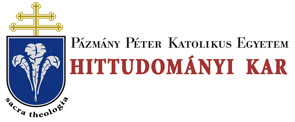Folia Theologica et Canonica 6. 28/20 (2017)
IUS CANONICUM - José Miguel Viejo-Ximénez, Raymond of Penyafort decretalist
RAYMOND OF PENYAFORT DECRETALIST 123 foreword of the work. Raymond introduces his method (modus agendi) as follows: first of all, he divides each part (particula) into titles (rubricete), which sometime are similar to the summaria of Gratian’s Decretimi or to the titles of the Compilationes antiquae; second, he describes the subject matter (materia) of each title; third, he sets out short questions and answers (quaestiones et solu- tiones earum) as well as principles of law (notule iuris ad rubricam); and fourth and last, he provides beginners (rudes) with indications of where different subject matters (materia) are located in the DG and in the decretals collections, both in the texts and in the glosses (tarn in textu quam in glossa). Raymond discussed the teachings of decretists and decretalists, among them Alain (Alarms Anglicus), Bazianus, Bernard (Bernardus Papiensis), Damase (Damasus Hun- garus), Hugh of Pisa (Huguccio), John (Johannes Faventinusl Galensisl Teuto- nicusl), Laurent (Laurentius Hispanus), Martin, Peter (Petrus BeneventanusJ), Tancred (Tancredus) and Vincent (Vincentius Hispanus). The correspondences between the Summa super titulis decretalium arranged by canonist Ambrosius about 1210-1215 and the SIC do not discredit Raymond’s freshness'“. The SIC is a comprehensive treatise on Canon law originally planned in seven parts (par- ticulae): (i) Varie species et dijferentie iuris; (ii) De ministris canonum, differen- tiis et officiis eorundem; (iii) De ordine iudiciario; (iv) De contractibus et rebus tarn ecclesiarum quam clericorum; (v) De criminibus et penis; (vi) De sacramen- tis; (vii) De processione spiritus sancii. Only parts one and two are preserved in the Borghese manuscript, which breaks off in the last title of part two (2.39 De maioritate et obedientia). These two parts could not have been finished before December 1, 1221, since Raymond quotes Ecclesia uestra, a decretal addressed by Honorius III ( 1216-1227) to the chapter of Rouen1''. 2. Barcelona: Master on Penance According to a copy made on 1231 of the original affidavit, the signature of «magistri Raimundi de Penna Forti» belongs to one of the witnesses of the donation that, on behalf of his uncle Bernat of Caldes, William the Caldes granted to the Bishop Berenguer of Palou (11241) and to the Cathedral Chapter of Bar- * Kuttner, S., Barcelona edition. 56-67. A new modern edition by Ochoa, X. - Díez, A. (ed.). Summa de iure canonico (Universa Bibliotheca Iuris I-A), Roma 1975, however again, cf. Kuttner, S ..On the method of editing medieval authors, in The Jurist 37 (1977) 385-386. García y García, A., La canonistica iberica (1150-1250) en la investigation redente, in Bulletin of Medieval Canon Uw II (1981) 44, footnote 16. ls Cf. Avedillo, J. A. M., Influjo del canonista Ambrosius en S. Raimundo de Penafort, in Revista Espuntila de Derecho Canònico 26 ( 1970) 329-355. 19 Cf. Kuttner, S., Barcelona edition, 64-67.
